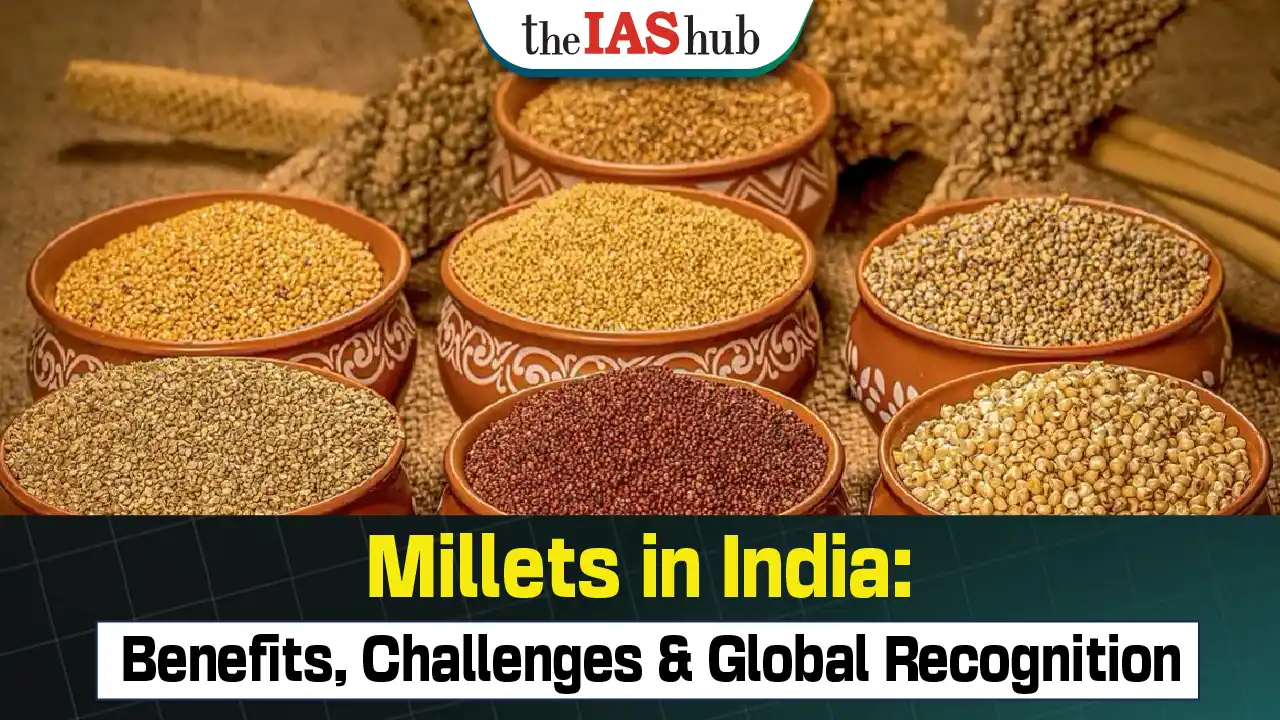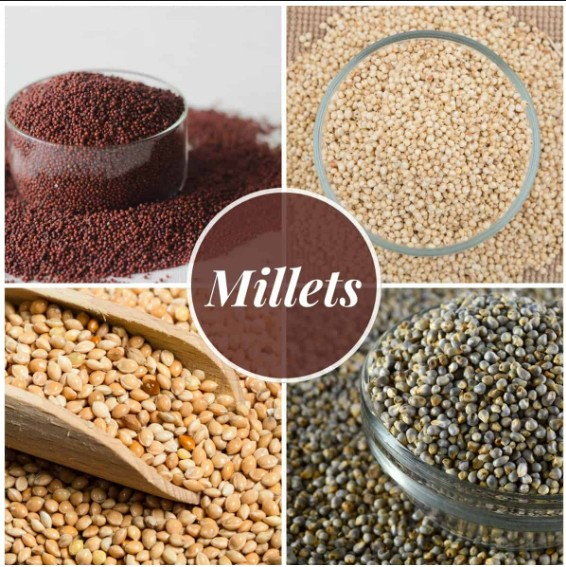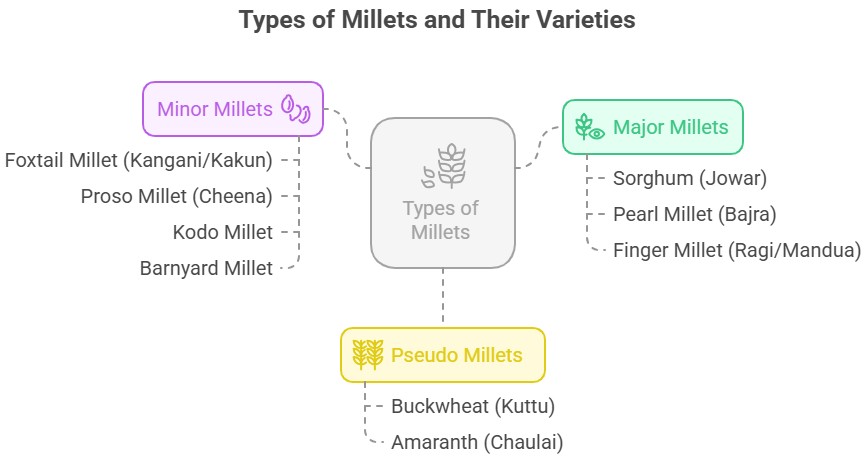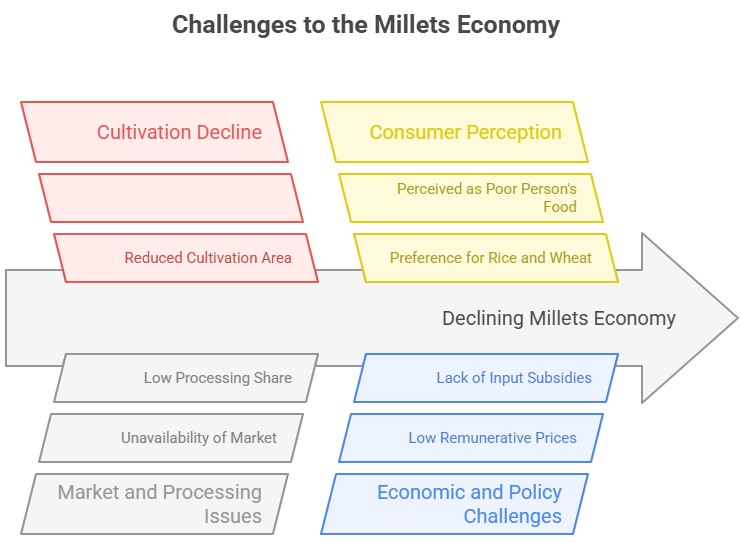Explore India’s millet revolution—nutritious, climate-resilient, and sustainable crops. Learn about types, benefits, challenges, and global efforts like the International Year of Millets 2023 & MAHARSHI initiative for food security and agro-biodiversity.


Millets, popularly called “mota anaj” in Hindi, are a collective group of small seeded annual grasses that are grown as grain crops, primarily on marginal land in dry areas of temperate, subtropical, and tropical regions.
India has a rich tradition of consumption of millets.
Year 2023 marks the celebration of the Iinternational Year of Millets 2023. Recognizing the enormous potential millets, which also aligns with several UN Sustainable Development Goals in terms of being climate resilient, nutritious, and water efficient crops, the government of India has been prioritizing millets.

Millets Production: Data and Trends
|
Millets Case StudyPopularising Millets in Telangana Komaram Bheem Asifabad is a tribal district under the project SAMPOORNA focused on ensuring the availability of traditional and local food like millets. Under decentralized Millet Village Circular Economic Model, millets are grown ,procured , processed, packaged and sold locally to villagers at cheaper price. |

Maharshi Initiative (Millets and Other Ancient Grains Initiative)In news- Recently G20 MACs meeting (meetings of agriculture chief scientists) 2023 in varanasi under India’s presidency launch the MAHARSHI (Millets and Other Ancient Grains Initiative) Objective-To promote research and awareness about agro-biodiversity, food security and nutrition in line with the international year of millets 2023.
|
Millet farming still needs ecosystem-level interventions. Millets promote women farmers and their farming knowledge. Millets can be revived in India by educating farmers and the public about their many benefits.


Refine your answer writing skills and elevate your UPSC preparation with personalized support and expert feedback.
Fill out the form to get started with the program or any other enquiries !








Are you dreaming of becoming an IAS officer? Then, IAShub can be your best guide. It is one of the Best IAS Coaching in Delhi. Many students who want to clear the UPSC exam join IAShub for learning. The institute gives both online and offline classes. Their teachers are experienced and helpful. They easily explain every topic. Students also get notes, tests, and tips to do well in the exam.
IAShub is in Delhi and is trusted by many UPSC students. It offers coaching for every part of the UPSC exam – Prelims, Mains, and Interview. The classes are simple and easy to understand. The teachers are experts and guide students in the right way. IAShub is also known for its helpful notes, test series, and answer-writing practice. IAShub is the best coaching in Delhi and also gives UPSC Online Classes. This helps students from any place in India to learn. The online classes are live and also recorded. So, students can watch them anytime. These classes cover the full UPSC syllabus.
Here are some important services provided by IAShub:
The UPSC Civil Services Exam has three parts:
This exam is tough, but with the right guidance, it becomes easy to manage. Students must study smart and stay regular.
IAShub supports students from the beginning to the end. It gives the right books, tests, and notes. The classes are easy to follow, and the teachers are always ready to help. Students get personal doubt sessions too. The test series and answer checking help students learn where they need to do better. Also, free study materials save time and money.
IAShub also guides students during the final stage – the interview. Experts take mock interviews and give useful tips. This full support makes IAShub one of the best IAS coaching in Delhi.